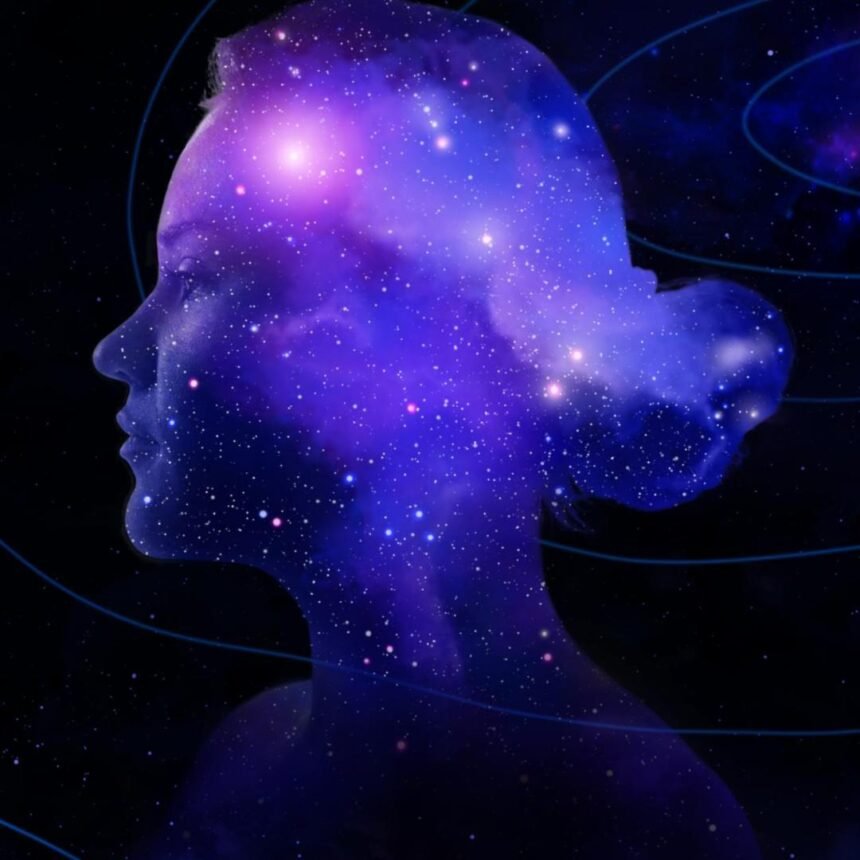Introduction
For thousands of years, the phenomenon of dreaming has captivated and mystified humans. Dreams can take us on incredible journeys, from fantastical worlds to surreal experiences that are impossible in our waking reality. Despite the ubiquity of dreams, the purpose of these nightly mental escapades continues to remain a subject of debate among scientists, psychologists, and philosophers alike. In this article, we will delve into the intricate details of the science and psychology behind dreaming, as well as explore the different theories that have been proposed to explain this fascinating phenomenon.
The Basics of Dreaming
REM Sleep: During rapid eye movement (REM) sleep, which is a stage characterized by heightened brain activity and vivid imagery, people primarily experience dreams. This stage of sleep is usually reached about 90 minutes after falling asleep and is marked by an increase in heart rate, breathing rate, and blood pressure. During REM sleep, the brain’s activity is similar to that of the waking state, and the body is temporarily paralyzed to prevent people from acting out their dreams. This stage of sleep is crucial for cognitive and emotional processing, memory consolidation, and overall brain health.
The Dreaming Brain: During the Rapid Eye Movement (REM) stage of sleep, which is one of the five stages of sleep, the brain’s frontal cortex, which is responsible for logical and rational thinking, is less active than during wakefulness. At the same time, the limbic system, which is responsible for emotions and memories, becomes highly active. This is why we often experience vivid dreams and intense emotional experiences during REM sleep. It is also believed that this stage of sleep is crucial for memory consolidation and emotional regulation.
Theories on Why We Dream
1. Memory Consolidation
- The Information Dump: Dreams help consolidate memories and process daily experiences.
- Selective Retention: The brain filters and prioritizes memories during dreaming.
2. Problem-Solving and Creativity
- Dream Incubation: Artists, scientists, and inventors have reported dream-inspired solutions.
- Unconscious Problem-Solving: Dreams explore alternative scenarios and connections.
3. Emotional Regulation
- Emotional Rehearsal: Did you know that dreams serve a purpose other than just being a series of images and sensations that occur during sleep? It is believed that dreaming helps us practice our emotional responses and cope with stress. In other words, dreams provide us with a safe space to experience and process different emotions, which can help us better handle similar situations in real life..
- Nightmares: It is believed that nightmares may play an important role in safeguarding us from potential danger in real life. These unpleasant dreams may serve as a type of warning system, preparing us to face and respond to threatening situations more effectively.
4. The Activation-Synthesis Model
- Random Neural Firings: During the rapid eye movement (REM) phase of sleep, the brain experiences random patterns of neural activity. These patterns can include fragments of memories, thoughts, and emotions. Dreams occur when the brain attempts to make sense of these random patterns by weaving them into a narrative that is coherent and meaningful. Depending on the individual’s experiences, emotions, and memories, the content of dreams can be bizarre, symbolic, or even mundane. The phenomenon of dreaming is still not fully understood by scientists, but it is believed to play a crucial role in the brain’s emotional processing, memory consolidation, and problem-solving capabilities.
- The Dream Story: The The human brain is an incredibly complex and sophisticated organ that processes a vast amount of information every second. However, much of this information is random and lacks any clear pattern or meaning. In order to make sense of this chaotic input, the brain constructs narratives or stories that explain the signals it receives. These narratives can take many forms, including memories, dreams, and even hallucinations. By creating these narratives, the brain is able to impose order and structure on the world around us, helping us to navigate and make sense of our experiences.
The Freudian Perspective
- Sigmund Freud: Sigmund Freud, who is widely regarded as the father of psychoanalysis, postulated that dreams were a window into the unconscious mind of the dreamer. According to his theory, dreams were a manifestation of suppressed desires, fears, and conflicts that were not openly expressed in waking life. Freud believed that the content of dreams was symbolic and that it was possible to decode their hidden meanings through a process of free association. By analyzing the symbols and images in dreams, Freud argued that one could gain insight into the unconscious motivations of the dreamer. Overall, Freud’s theory of dreams revolutionized the field of psychology and had a lasting impact on our understanding of the human psyche.
- Manifest vs. Latent Content: The concept of manifest and latent content is a crucial aspect of dream interpretation. The manifest content denotes the surface story of the dream, whereas the latent content represents the underlying, hidden meaning of the dream. Dreams often disguise their true meaning through symbols, metaphors, and other forms of imagery, making it challenging to decipher the latent content. However, by analyzing the manifest content and identifying recurring symbols and themes, it is possible to uncover the latent content of the dream, bringing insights into the dreamer’s unconscious thoughts, desires, fears, and experiences.
Also Read: Beyond Our Universe
The Neuroscientific Approach
- Activation of Brain Regions: Numerous studies conducted on neuroimaging have revealed that particular regions of the brain become active during the course of dreaming.
- The Default Mode Network: There is a particular network in our brain that remains active when we are daydreaming or reflecting upon ourselves. This neural network is believed to be associated with the phenomenon of dreaming and may play a significant role in the process.
The Cultural and Symbolic Aspects
- Dreams Across Cultures: Dreams have been interpreted differently across various cultures. Some cultures consider dreams as messages from the divine or supernatural entities, while others consider them as meaningless and random thoughts that occur during sleep.
- Dream Symbols: Interpretation of dream symbols such as flying and falling can have both cultural and personal significance. Understanding the meaning behind these symbols can provide insights into an individual’s subconscious thoughts and emotions, as well as shed light on the collective beliefs and values of a particular culture.
The Lucid Dreaming Phenomenon
- Awareness Within Dreams: Lucid dreamers realize they are dreaming and can sometimes control the dream.
- Scientific Exploration: Researchers study lucid dreaming for therapeutic purposes and consciousness research.
The Unanswered Questions
- Evolutionary Purpose: Why did dreaming evolve?
- The Forgotten Dreams: We forget most dreams—why?
Conclusion
Dreams are an enigmatic phenomenon that continue to captivate us. They are like a blank canvas where our minds paint stories, fears, and desires. Some claim that dreams serve as memory aids, helping us consolidate our memories and organize them in a more meaningful way. Others believe that dreams are emotional rehearsals, allowing us to practice how we would react to a certain situation in a safe and controlled environment. And then there are those who view dreams as mere neural fireworks, the byproduct of our brain’s electrical activity during sleep. Regardless of their purpose, dreams remain a mysterious and intriguing aspect of human experience, luring us into the enigmatic theater of the night.



